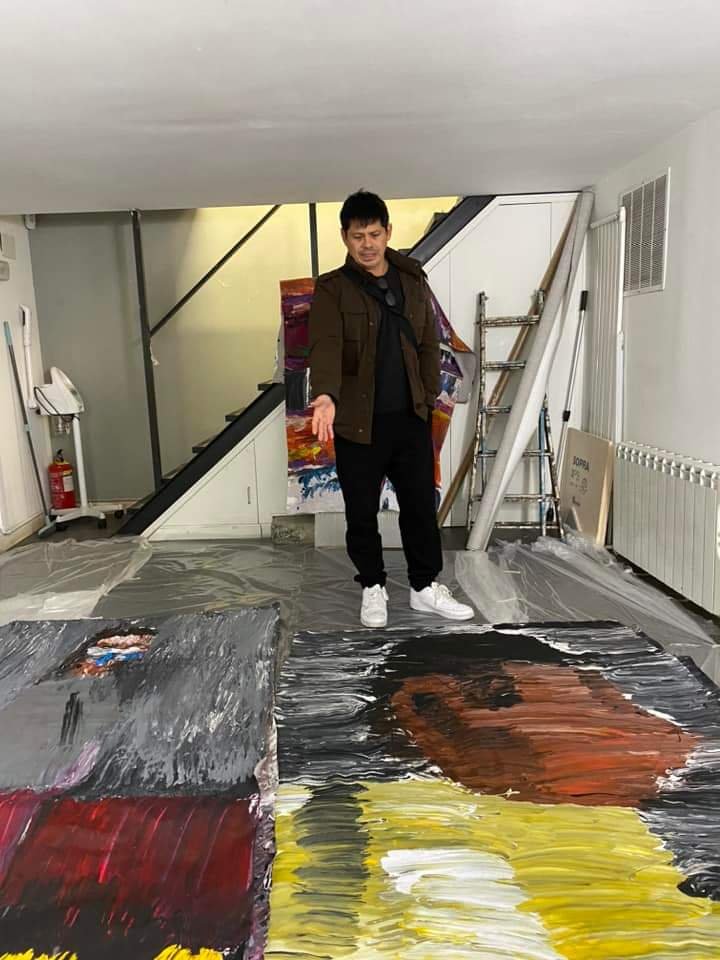Words and Interview Judith Torres
Images David Kaufman
The Streets as Canvas
“I was walking yesterday. And I saw a pile of nets on the pavement. And there was an arm sticking out. With a deformed wrist, it was bent like that, like a broken bird’s neck. And there were flies all over the body. When I leaned in to explore, the person was alive.”
David E. Carriedo Kaufman pounds Manila’s pavement daily, searching for faces and stories.
“I looked to see if I could help in some way. There were actually people around, the mother and another child. They said he had epilepsy and spent his life, his existence, under that net. I felt unbelievable pain to see a human being in that state.” Kaufman asked if he could photograph them; they agreed.
Stone to Stories
I met David Kaufman eight years ago online. He was an active Facebook user, posting pictures of his travels in Europe, searching for stone. Kaufman is a premier importer of high-quality natural stone for architectural projects. He visited the ancient quarters of Italian cities, taking pictures of landmark buildings, monuments, and statuary, identifying the types of marble or granite used. A great way to promote his business.
“I gave them food and whatever I had on me, every single centavo… and I broke down as I walked away. I felt so helpless. And unable to control my emotions. This happens all the time. I’m just—I break down, weeping for an hour afterward. I continue walking and talking to other people, literally still crying because I’m unable to cope.”
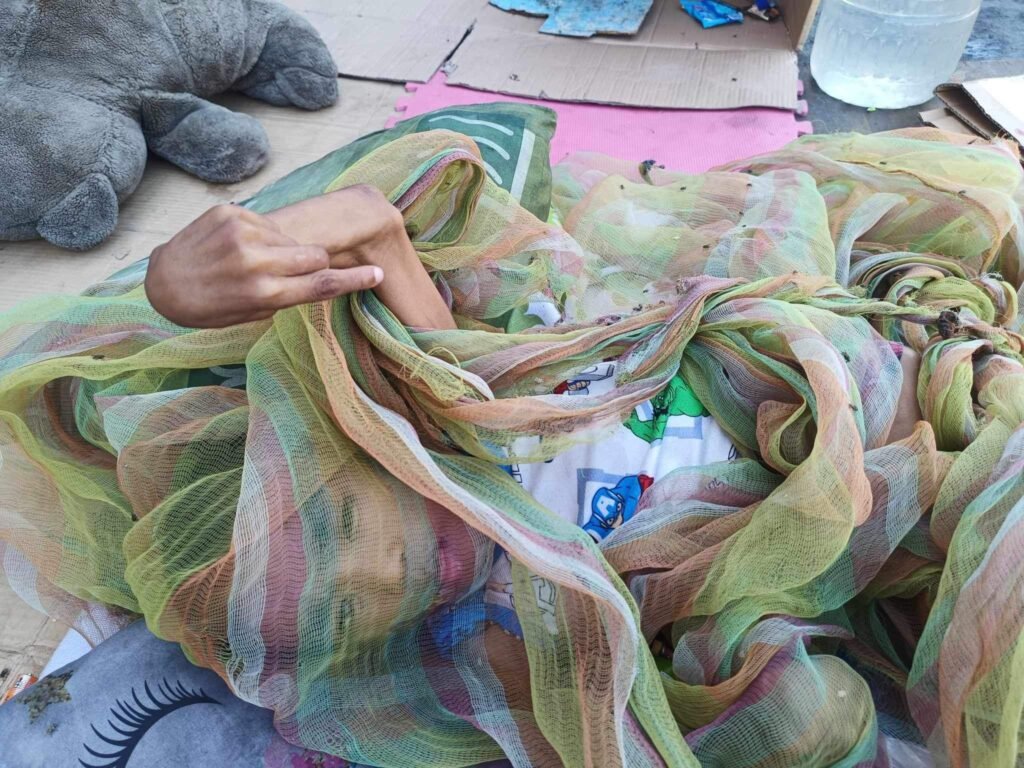

Manila’s Forgotten
And then, David Kaufman started posting photos of brutalist and modernist buildings in Manila. The stone supplier and contractor is also a heritage buff and frequently exhorts his Facebook audience to appreciate and protect old buildings from demolition. In one post, he says, “They say you have to travel for inspiration. I have it every single minute. Manila is an endless source. No other country like my Manila.” Kaufman’s comment is accompanied by 26 photos of buildings in Binondo—brutalist, modernist, mid-century, pre-war, and post-war bahay-na-bato, and pastiches of other styles past.
“Then you walk another five feet. There’s another one, and another one, and another one. It just makes you think what a cruel world this is. And so, it makes me want to do what I’m doing. Just like a war photographer, like a journalist, detached, in a way, as much as I can. Because I want it to be my mission to bring a voice to these people through my visual art and painting.”
To those who didn’t know of Kaufman’s childhood passion for painting, posts of his artwork and announcements on upcoming solo shows were a surprise. What was not surprising was his continuous and relentless journeying through city streets, searching for raw material. From capturing the raw, unyielding stone that sleeps beneath the earth to documenting the silent narratives of battered buildings, his journey has led him to the living tapestry of city streets, where each face he captures tells a story of survival and hope. His desire to preserve old buildings translates into an artistic mission to preserve human experiences through his paintings. Take Real World Edvard Munch The Scream, for example.
Real World Edvard Munch The Scream by David Kaufman. “The photo was when I came across him in Quiapo in 2023,” the artist shares.
Artistic Encounter
Inspired by a man he encountered with a deformed face, Real World Edvard Munch Scream is a visceral portrayal of the human condition. Thick, expressive brushstrokes sweep across the canvas with a sense of urgency and raw emotion. The colors are intense yet harmonize to form a coherent image. There’s a sense of pain and endurance within the chaos of the strokes, suggesting a life lived with hardship but also resilience. The aggressive application of paint could be a metaphor for the struggle and strength required to navigate life’s difficulties.
“When I saw him again, it was like meeting an old friend.” Kaufman’s selfies with the man reflect a connection that transcends the casual nature of a street encounter. They suggest that Kaufman does not simply use the man on the street as subjects for his art but engages with them on a personal level, forming bonds that inform and enrich his work.
This humanistic approach of an artist invested in the lives and stories of those around him surprised me, as my previous impression of Kaufman, the businessman, was of someone in a hurry, impatient to say his piece, conclude his business, and get going.
A Bold Introduction
In a bold and assertive move, the David Kaufman I know emailed Manila’s art galleries last year (2023), asking them to consider exhibiting his work. His letters proclaimed his serious intent and readiness to engage with the art world:
“I am writing to introduce myself as a multi-cultural artist with roots spanning the Philippines, Spain, and America. My artistic journey commenced in the vibrant streets of Manila, where I nurtured my creativity at De La Salle University’s College of St. Benilde before further honing my craft through postgraduate studies at Keble College, Oxford.
“As I approach a personal milestone—my 50th year—I find myself at a pivotal juncture, eager to share the culmination of four decades’ worth of artistic exploration. I am reaching out to express my sincere gratitude for your consideration of my request to exhibit at your esteemed gallery.”
Specter, Life Force, and Intense Passion are among 80 portraits exhibited at David Kaufman’s alma mater, the College of St. Benilde’s School of Design and Arts, on January 25, 2024. All the subjects are people Kaufman met walking Manila streets.
In Search of Connection
Kaufman’s letter to the galleries continues: “My portfolio is a testament to my passion for street culture and my empathetic connection to the subjects that grace my canvases. Each piece is an ode to the human spirit, a narrative of resilience amidst the cacophony of vivid street hues and the poignant realities of life’s tapestry.”
The Kaufman I had come to know through quick exchanges and shared professional interests was revealing a depth of patience and compassion in his art that was new to me. He loses no patience with Manila’s lost and ignored. His embrace of their hurts and turmoil makes sense, though, given his ability to find beauty in the metropolis’ mayhem.
Specter is an embodiment of his mission to give voice to one unseen. The yellow splotch starkly contrasts the otherwise muted palette, drawing the eye and suggesting a sudden revelation within the composition. The textural strokes convey a raw emotion, possibly indicative of inner tumult. Kaufman’s method of applying paint in thick layers makes the spectral figure almost emerge from the canvas, hinting at the idea of presence and absence, of being seen and unseen.
Portraits from Madrid, The Spy (left), and Soldier Heart (right), 34 x 32 inches, 2023, among 30 works by David Kaufman exhibited at Space Encounters.
Performance in Paint
“My technique is a meditative interplay of layers, where each stroke is a deliberate act of storytelling, transcending traditional methods to embrace a full spectrum of mixed media. This eclectic approach—ranging from intricate brushwork to dynamic pourings and splatters, and even the use of my entire body—is a testament to the energy and vision that inform my creations.”
While David Kaufman may be gentle and patient with his subjects, he is swift, physical, and forceful with paint. The Spy and Soldier Heart are executed with thick, impasto-like strokes, applied with confident, purposeful movements. The swirls and spatters provide dimension and kinetic energy, very much the result of Kaufman’s vigorous dance with pigment and canvas. Such is his fervor in creating art that he has taken to calling his method a “performance in paint.”
Such is his fervor that his wife, Mai, has forbidden him from painting at home and asked that he confine his energetic ‘performances’ to his studio.
And such is his fervor that he has taken to painting bare-chested so as not to ruin more clothes than he already has. And so it was in this half-naked state that Kaufman did our interview recorded on video. Unexpectedly startling, but then that is Kaufman too. He was in the middle of painting while his family was out and could not be bothered to slip into something less comfortable (haha!) for the sake of one old enough to be his mother. I chose to see this as a hallmark of Kaufman’s commitment to authenticity and his unapologetic view of living and breathing art in every moment.
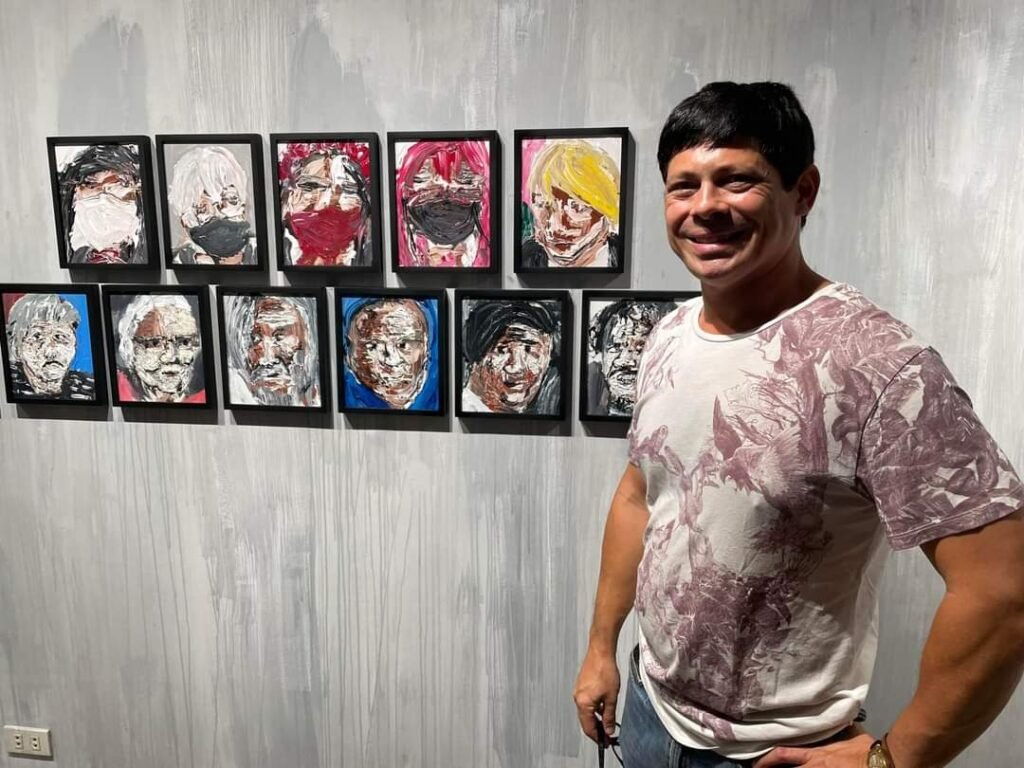

Conversation with David Kaufman: A Quest to Capture Essence
Torres: Four decades of exploration! So you’ve been at it since ten. What was that like?
David Kaufman: In grade school, I would spend every free time I had at the library. I must have looked at all the books in the Arts section.
Can you trace your evolution from those early days in school to the present?
Especially attractive to me were works by the Impressionists Picasso, Monet, Degas. And before long, I was making reproductions of some of their paintings. Aged ten, I replicated Picasso’s Girl Before a Mirror, and there were definitely elements of the Guernica in my first self-portrait. Then, the surrealist Dali captured my imagination and influenced the broken glass installation I made when I was 12.
Visits to museums in New York and Europe in my teens further sharpened and deepened my love of Art. My award-winning thesis at DSLU’s College of St. Benilde, The 19th Century Filipino Painters in Spain: Focus Juan Luna and Felix Hidalgo, testified to this profound interest. During my postgraduate studies at Oxford, I continued to paint, filling the walls of my room with my rather subdued, two-tone paintings.
You introduce yourself as a “multi-cultural artist.” How have these cultures impacted your work?
Definitely, I am influenced by the confidence, outspokenness, and unapologetic natures of the cultures I am part of. But above all, I value authenticity and truth.
Luneta Park exhibition in Manila by David Kaufman
You’ve mentioned “transcending traditional methods” in your artistic process. Many of your heads remind me of Leon Kossof’s stuff and Frank Auerbach’s Heads of EOW. Wondering how they or earlier maestros of impasto, such as the beloved Van Gogh, influenced your evolution.
While I’ve been compared to Georg Baselitz, Anselm Keifer, Van Gogh, and Francis Bacon, I avoid studying other works for too long as I aim to produce work and express myself in my unique artistic language. There may be some similarities between myself and others in the rough, aggressive, energetic application of paint, but these are merely coincidental.
In my more spacious Madrid studio, when creating on an eight-foot canvas on the floor, I have to paint outwards from the center. Walking, kneeling, and crawling, I use hands, brush, and sticks. I work rapidly in a spiral. There is no drying time. That’s what I mean by using my whole body.
Street culture and its people play a central role in your art. How long are your walks? How often do you walk?
Every day, if I can, for two hours. Fifteen thousand steps is my target. I have two objectives for my walks: Painting subjects and architecture. Plus food, of course.
Could you recount a particularly memorable encounter that was translated onto canvas?
My decade spent walking daily just to look and meet ordinary people has definitely been life-changing. The warmth shown me seems incomprehensible. I have met so many who have so little yet do not exude any bitterness whatsoever. A man with a severely deformed face allowed me to take his photo. He refused to accept any money.
The Real-life Edward Munch Scream.
Yes. Highly charged by these encounters, the discomfort caused propels me to paint, using my hands, brush, throw, and splatter at the canvas to express what I have just experienced, giving me emotional release. When I showed him the finished painting, it clearly gave him much joy. He embraced me while repeatedly saying, “I love you.”
Wow.
I said, “I love you too.” It gave him joy because I think he knew that I also felt his pain.
“After the painting, I met him again at Avenida in January 2024,” Kaufman shares.
You use “every sympathetic stroke” to tell the stories of the people you meet.
When I see something that moves me, I don’t aim to produce a visually pleasing image but simply try to capture the emotion I felt from the encounter. Reviewing my day’s photos, I react spontaneously, intensely, energetically, allowing the paint to flow freely.
Working at high speed, sometimes beating the canvas, the result may be neither soothing nor pretty. I know the result is not to everyone’s taste, but in my performance art, the steps and lyrics are my very own.
The exhibit I visited at Space Encounters were all portraits of people you shot in Madrid.
Yes. But I stopped all Spanish subjects because I wanted to focus on Filipinos. So far, I’ve done 350 canvases in Spain and then taken them back in my luggage to Manila.



Why do you paint Filipino subjects in Madrid? Is there something special about painting in Madrid?
I buy rolls of canvas at Jeco on Hortaleza Street, where I buy all the art materials. It’s the supercenter beside the top art and architecture schools, galleries, and trendy restaurants. It’s like Soho, New York. The paint acts differently in Spain. I had to relearn to paint because it’s so cold, the paint is hard, like toothpaste.
Got it. You rent a studio in Madrid because of the supplies. Not because your subjects are there.
I rent a separate studio so I can make a mess. Remember, I need to crawl on the floor for the big works and play noisy music, plus I don’t need to clean up daily. Because if I use my dining room at home, it needs to be free of my paintings by lunch.
And this studio you rent, they’re okay with the mess? Is it because they rent out to artists?
The studio is not for artists, but I put plastic on all walls, floors, mirrors, and I clean before I return to the owner on the last day.
David Kaufman’s studio on Valverde 40 is in the heart of Madrid, an area known to be an incubator for artists and a hub for creative activities. It’s a fitting location for an artist’s studio and gallery space, for Kaufman to serve as an art instigator for Filipino creatives.
Why Madrid? Why not New York, where your dad’s from?
Since completing my thesis on “The 19th Century Filipino Painters in Spain: Juan Luna and Felix Hidalgo” for my first degree at St. Benilde College, DLSU, my interest in this subject has not diminished. On the contrary, my quest is to expand and further develop this profound and integral connection between our country and Spain.
Currently, I bring my artwork to Manila to exhibit at venues there. Galleries, meanwhile, export paintings from Manila to Madrid. This practice incurs great expense in time, effort, and freight charges. This does not make financial sense to me. There is no demand for Filipino art in Spain because there is little awareness of our country’s incredible talent. Since Luna, Hidalgo, and Zobel, no Filipino artist I know of has had a studio in Madrid.
What, then, makes sense to you?
As a center of the arts, Madrid is the ideal location for a gallery-community center, providing a home away from home for artists. Such a creative space in Madrid, an incubator for Spanish-Filipino painters, will boost these artists’ status in Europe. As most Filipinos are here to work and not to buy high-end art (for example, my artworks are reasonably priced), it would be a gateway to the local Filipino community market.
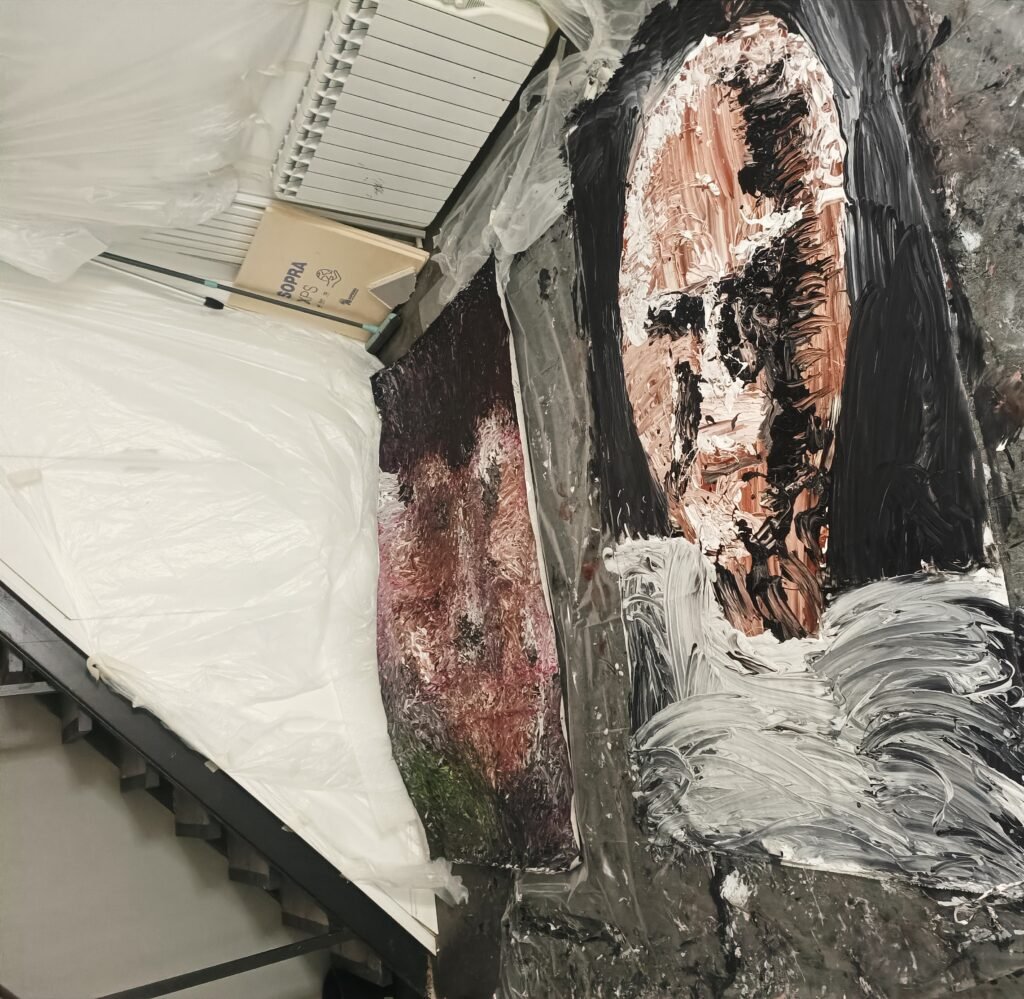

Oh, to sell to Filipinos, not Europeans?
Creating a Madrid venue for an emerging artist like me will show confidence in the vibrance and energy of Filipino artists. This could provide the impetus to propel our entry into the global art scene. Galleries and artists will keenly watch this endeavor, willing the pioneering venue to succeed, setting a precedent. It is a pity to hear of artists who have taken their works to Paris only to return to the Philippines with their works unsold.
Being a Manila and Madrid-based artist, I am in an ideal position to build that awareness of the value of exhibiting in a gallery to uplift visibly. As an artist in Spain, I am trying to make goodwill for all Filipinos, joining in the aspiration of every artist to follow in the footsteps of Luna, Hidalgo, and Zobel to gain international recognition and create future masters.
Bravo! In one of your artist’s statements, you said, “Expressing in pigment, I create a performance in paint, capturing an image on an emotional level on a higher mental plane.” Who are you performing for, and how do you interpret their reactions to your work?
The public has been amazingly warm. The art galleries and major players have given me much support and been forthcoming with valuable advice to help me define my direction.
Unsurprisingly, I have also experienced some rejection. These I view as constructive, as they allow me an opportunity to grow. Often, when the reaction is silence, I take this to mean work is still required to develop my artistic maturity and more exhibits. I have to earn my place. It cannot be rushed. I realize that my professional commitment is still under review, but the reception and support have been tremendously encouraging so far.
You often mention your father’s advice to keep art as a parallel pursuit to business.
My late Dad, a New Yorker, tried to steer me away from the Arts. Coming from the post-war era, he considered the professions and business the wiser career choices. I took his advice and spent the next 25 years establishing Kaufman Stone as the leader in its field.
How has this duality shaped your artistic approach and philosophy?
Words are very powerful. After my Dad’s counsel, I put my brush aside and stopped painting. I focused on running the business. This allowed me to work with some of the most creative leaders in Philippine architecture.
Being around these world-class tastemakers in their profession only heightened and sharpened my creative nature. Having stood “on the shoulders of giants” with what they’ve instilled in me, I will try not to betray them with my artistic output.
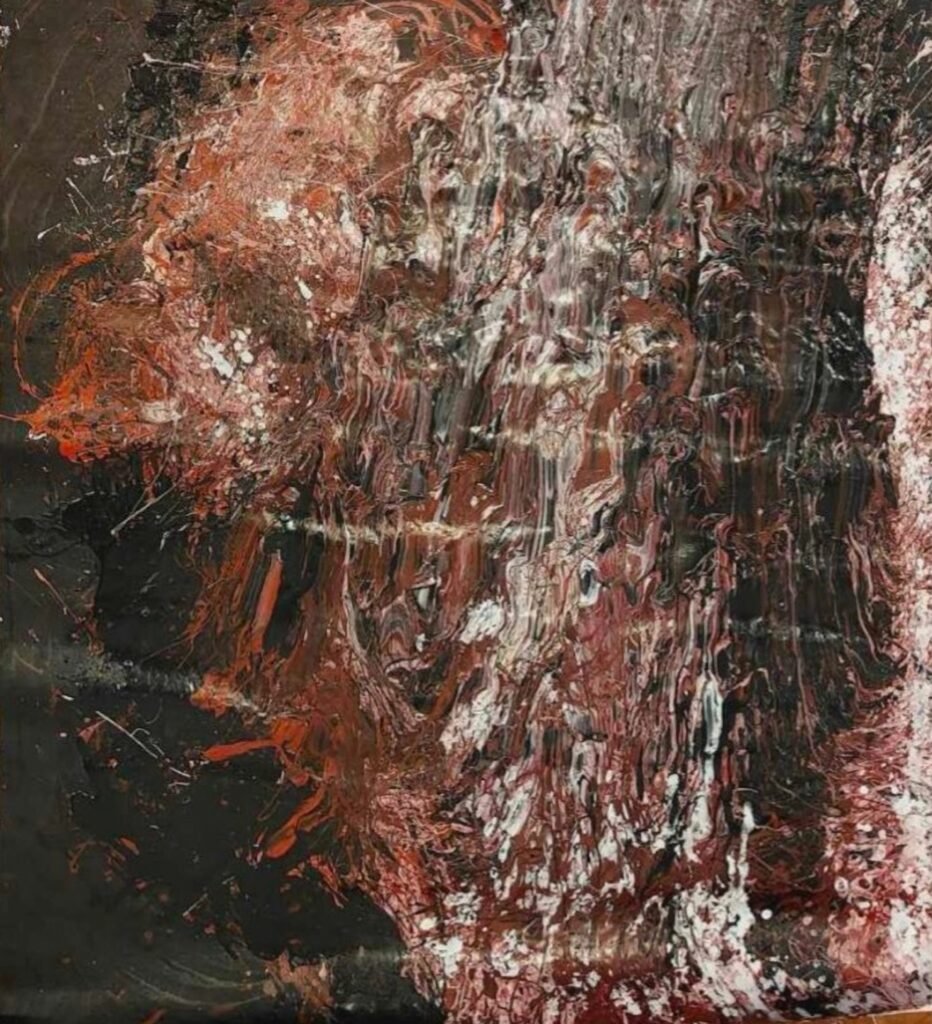

In Conclusion
As David Kaufman’s search pulses through the city’s veins, he captures not just images but the essence of existence. Each portrait testifies to strength and resilience, giving voice to the lost and the overlooked. In this earnest depiction of life’s stark realities, Kaufman’s art finds meaning, resonating with a purpose that transcends the surface to touch the soul. •















